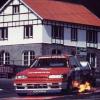Announcements
-
Similar Content
-
Latest Posts
-
By AndyR34GTT · Posted
They are for sure ztune reps. If they were cheaper cool but 400 USD for them to possibly not fit is a big gamble for me . Dang it -
From my experience, I would avoid any "manufacturer dealer" from touching my cars, so avoid them like the plague and take you car to a reputable independent workshop in your area.
-
Looks like Z-tune copies, it's a roll of the dice so go for it if you have the money. You may need to modify it to fit.
-
blardy scammer, anyways once i get married i will come speak to you (again). You're legit my hookup guy now bahahaha
-




Recommended Posts
Create an account or sign in to comment
You need to be a member in order to leave a comment
Create an account
Sign up for a new account in our community. It's easy!
Register a new accountSign in
Already have an account? Sign in here.
Sign In Now